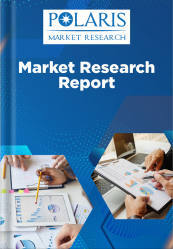The U.S. biostimulants market was valued at USD 532.38 million in 2024 and is projected to grow at a compound annual growth rate (CAGR) of 6.8% from 2025 to 2034, reflecting the increasing integration of sustainable agricultural inputs into mainstream farming practices. This robust expansion is driven by rising awareness around soil health, growing adoption of regenerative agriculture, and the need for yield optimization amid climate volatility. While North America remains the dominant regional market, evolving geopolitical dynamics, regulatory frameworks, and trade-specific considerations are shaping demand across Europe and Asia Pacific, influencing how companies approach cross-border supply chains and regional market penetration strategies.
North America, particularly the United States, leads the global biostimulants landscape due to strong government support for sustainable farming initiatives, well-established distribution networks, and a mature base of organic and conventional growers seeking performance-enhancing inputs. Federal agencies such as the USDA and EPA have increasingly emphasized biological-based crop protection and growth enhancement solutions, aligning with broader climate resilience goals under the Inflation Reduction Act (IRA). The U.S. benefits from a robust R&D ecosystem supported by land-grant universities, agtech startups, and industry consortia that are driving innovation in seaweed extracts, microbial formulations, and amino acid-based products. Regional manufacturing trends indicate a shift toward localized production facilities to reduce logistics costs and improve time-to-market responsiveness, especially for perishable or live-microbial products.
Europe follows closely behind, with Germany, France, and Italy serving as key innovation hubs. The region's emphasis on policy-driven sustainability—such as the European Green Deal and Farm to Fork Strategy—is reinforcing the adoption of biostimulants as alternatives to synthetic fertilizers and plant growth regulators. Regulatory harmonization through EFSA and national certification bodies has streamlined product registration pathways, encouraging both domestic and international firms to scale their offerings across the EU. Cross-border supply chains remain critical, with logistics centers in the Netherlands and Belgium facilitating imports of raw materials and exports of finished goods. However, energy cost volatility and inflationary pressures are tempering growth potential in some Southern and Eastern European markets.
Read More @ https://www.polarismarketresea....rch.com/industry-ana
Asia Pacific, led by China and India, is emerging as a strategic battleground for global biostimulant players, with increasing investments in urban agriculture, precision irrigation systems, and integrated pest management frameworks. Chinese firms such as Kingenta and Sinochem Agri are expanding their biostimulant portfolios, benefiting from favorable government policies promoting low-chemical input farming models. India, too, is gaining traction, particularly in horticulture and specialty crops, where biostimulants are used to enhance stress tolerance and nutrient uptake in resource-constrained environments. Regional manufacturing trends indicate a shift toward localized formulation centers to reduce import dependency and improve response times to local demand fluctuations.
Key drivers fueling this expansion include the growing consumer demand for organic produce, increasing investment in bio-based agricultural inputs, and advancements in microbial fermentation and extraction technologies. However, restraints persist, including inconsistent regulatory classifications across jurisdictions, limited farmer education on application protocols, and fluctuating feedstock availability. Opportunities lie in the development of hybrid biostimulant-biocontrol products, increased use in controlled-environment agriculture (CEA), and expanded deployment in carbon farming programs incentivized by environmental credit schemes.
Market trends reflect a growing preference for bio-stimulatory solutions that offer multi-functional benefits, such as drought resistance, nutrient efficiency, and enhanced root development. These innovations are reshaping product differentiation strategies and driving segment-wise performance improvements across row crops, fruits & vegetables, and ornamental plants. As companies refine their regional market penetration strategies, those prioritizing sustainability, digital engagement, and value-added service offerings are better positioned to capture sustained growth in an increasingly competitive and regulated environment.
Competitive Landscape:
• BASF SE
• Corteva Agriscience
• UPL Limited
• Koppert Biological Systems
• Valagro SpA
• Isagro SpA
• Stoller Enterprises, Inc.
• Italpollina S.p.A.
More Trending Latest Reports By Polaris Market Research:
Cooling Fabrics Market
Cryptocurrency Payment Solutions Market
Cancer Contrast Media Market
Ground Support Equipment Market
Focused Ion Beam Market
Arbovirus Testing Market
Australia Facial Injectables Market
Quillaia Extracts Market
Mussel Oil Market
